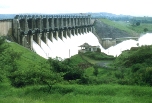Banswara is situated in South Rajasthan in India. Banswara princely state was founded by Maharawal Jagmal Singh. It gets the name from dominance of “bans” or bamboo forests. It is also known as ‘City of Hundred Islands’, due to presence of numerous islands in the Mahi River, which flows through Banswara.
About BANSWARA
ABOUT BANSWARA

GEOGRAPHY
District Banswara is situated in the southern – most part of Rajasthan. It has an area of 5037 square Kilometer and lies between 23.11° N to 23.56° N latitudes and 73.58° E to 74.49° E. longitudes.
It is bounded on the north by Dhariawad Tehsil of Udaipur District and Pratapgarh District, on the east by Ratlam District of Madhya Pradesh, on the west by Sagwara and Aspur Tehsils of Dungarpur District, and on the south by Jhabua District of Madhya Pradesh. It also touches the boundary of Panchmahal District of Gujrat on the south-west.
The region represents a rugged terrain undulated by short ridges west of Banswara. The eastern part of it is occupied by flat-topped hills of the Deccan trap. It has the southern end of the Aravali mountains.

The drainage system belongs to the Mahi river which originates from Amjera hills near Dhar in M.P. Its main tributaries are Anas, Chanp, Erav, Haran and Kagdi. This district has got highest rainfall in Rajasthan. Therefore, known as ‘Cherapunji’ of Rajasthan. The Mahi Bajaj Sagar dam has been constructed on the Mahi, some 16 KM away from Banswara town. Right and Left Main Canals and their distributaries irrigate 60,149 hector of land. Normal annual rainfall is about 82.59 cms.
Maize, Wheat, Cotton, Gram are main crops. Graphite, Soapstone, Dolomite, Rock Phosphate, Limestone and a variety of marbles are found. Gold mineral is also found around Jagpura. Forest land consists of 20% of the told area but most of the forest land is devoid of trees. Hills have become bald-headed.

CLIMATE AND RAINFALL
The district has a climate which is very much milder than that in the desert regions in further north and north-west.
- Maximum temperature is 45 to 46 degrees Celsius.
- Minimum temperature is 10 to 20 degrees Celsius.
- Normal annual rainfall is 82.59 cms.
- Population: 15,00,420
- Density of population: 298/km²
- Literacy: 44.22 %
- Total working population: 32.46 %
- Percentage distribution of work force
- Cultivators: 75.58 %
- Agricultural labours: 9.36 %
- Household industry, manufacturing
- Processing servicing and repairs: 1.25 %
- Other workers: 13.80 %

